Photo Gallery: Seven Surprising Pollinators
We’re all familiar with the beleaguered honey bees and beautiful butterflies that pollinate our crops and wildflowers. But pollinating animal species comprise a diversity of wild creatures, from birds and bats to moths, beetles, flies and even the odd land mammal or reptile.
Flies
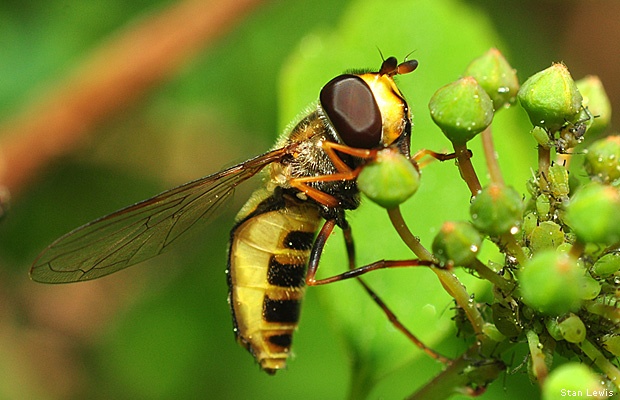
A hoverfly visits a front yard in Chapel Hill, North Carolina. Also called flower flies or syrphid flies, hoverflies, true to their name, are often spotted hovering around flowers. Many adults feed primarily on nectar and pollen, and some are considered important pollinators.
Bats
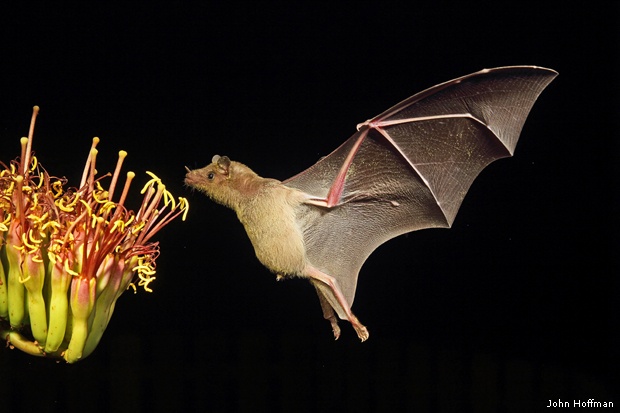
A lesser long-nosed bat approaches an agave flower in Arizona. Listed as endangered by the U.S. Fish and Wildlife Service due to habitat loss, these bats feed on the fruit and nectar of night-blooming cacti, including saguaro, organ pipe and agave.
Native Bees
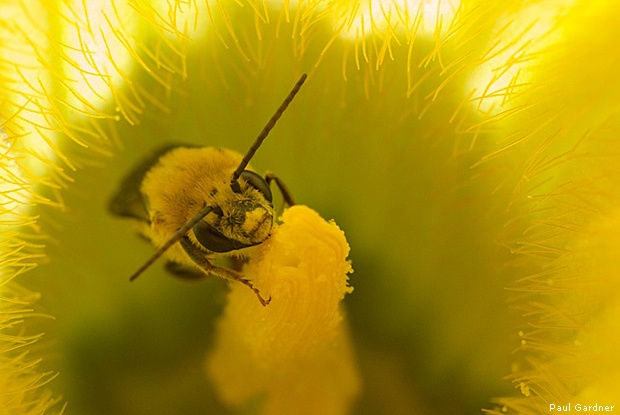
A wild bee pollinates a pumpkin flower in an Ephraim, Utah, garden. Unlike colony-dwelling honey bees and bumble bees, the majority of native bees are solitary. Bees are by far the most important pollinators in nature and are essential to producing more than a third of all foods and beverages we consume.
Moths

A hummingbird moth sips nectar in Arizona. Often mistaken for hummingbirds, these day-flying insects can remain suspended in air in front of a flower with their long tongues unfurled to feed. Also known as hawk moths, they are most active in summer.
Hummingbirds
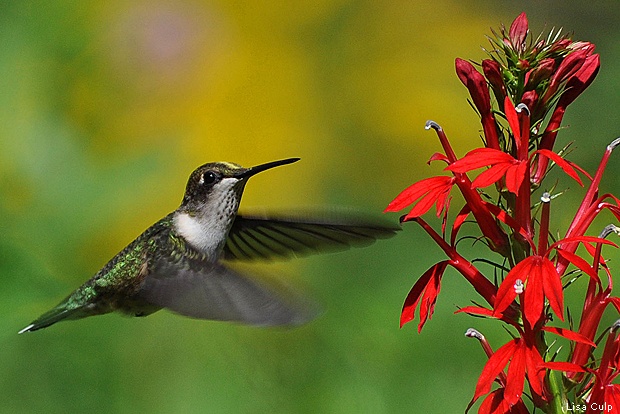
A female ruby-throated hummingbird flies toward cardinal flowers in Northbrook, Illinois. These tiny, popular birds are particularly attracted to red, tubular blossoms. Long-distance migrants such as ruby-throated hummingbirds are threatened by global warming because their winter and summer habitats respond differently to changing climate.
Beetles

A delta flower beetle visits a Tallahassee, Florida, backyard. Also called the D beetle (for the Greek letter Delta on its back), the insect feeds on pollen and nectar. Its distinctive coloring and Delta pattern suggest the insect may have evolved to mimic a wasp.
Wasps
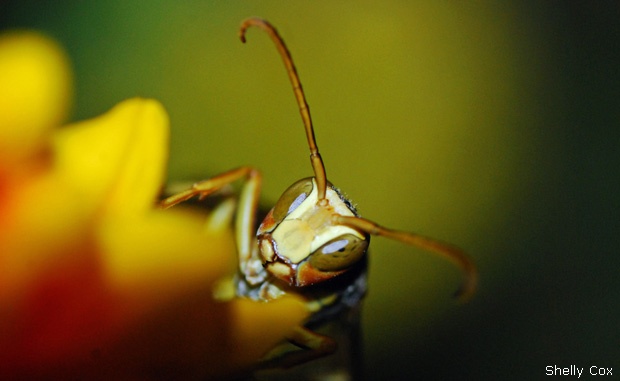
A paper wasp peers over the top of a flower in a Savannah, Missouri, backyard. While frightening to many people, the majority of wasp species do not sting humans. They also are important pollinators, though less efficient than bees because their bodies are not covered with fur or hair that traps pollen.
Pollinator Declines
“There has been little effort to document the long-term status of pollinator populations,” May Berenbaum, chairwoman of the Department of Entomology at the University of Illinois at Urbana-Champaign, said in an article, “The Buzz on Native Pollinators,” published in National Wildlife. But in a 2006 National Academy of Sciences report, a scientific committee chaired by Berenbaum found that in cases where data do exist, pollinator population trends are “demonstrably downward.”
Such cases include European honey bees, lesser long-nosed and Mexican long-tongued bats and, most dramatically, many species of bumble bee. Culprits responsible for pollinator decline range from habitat loss and fragmentation to introduced diseases, pesticides and climate change.
You can help bumble bees, butterflies and other at-risk pollinators by cultivating native plants, avoiding pesticides.
© 2024 Created by LadyHawkღ.
Powered by
![]()